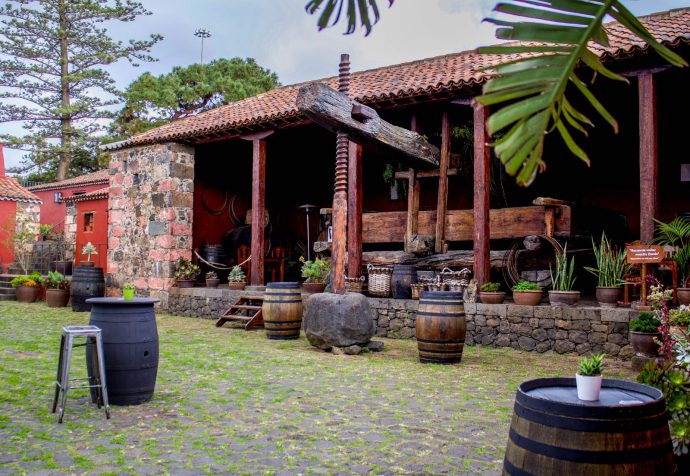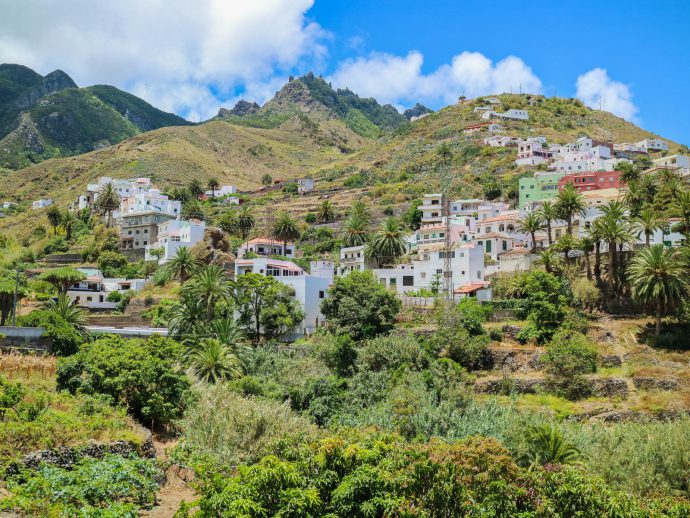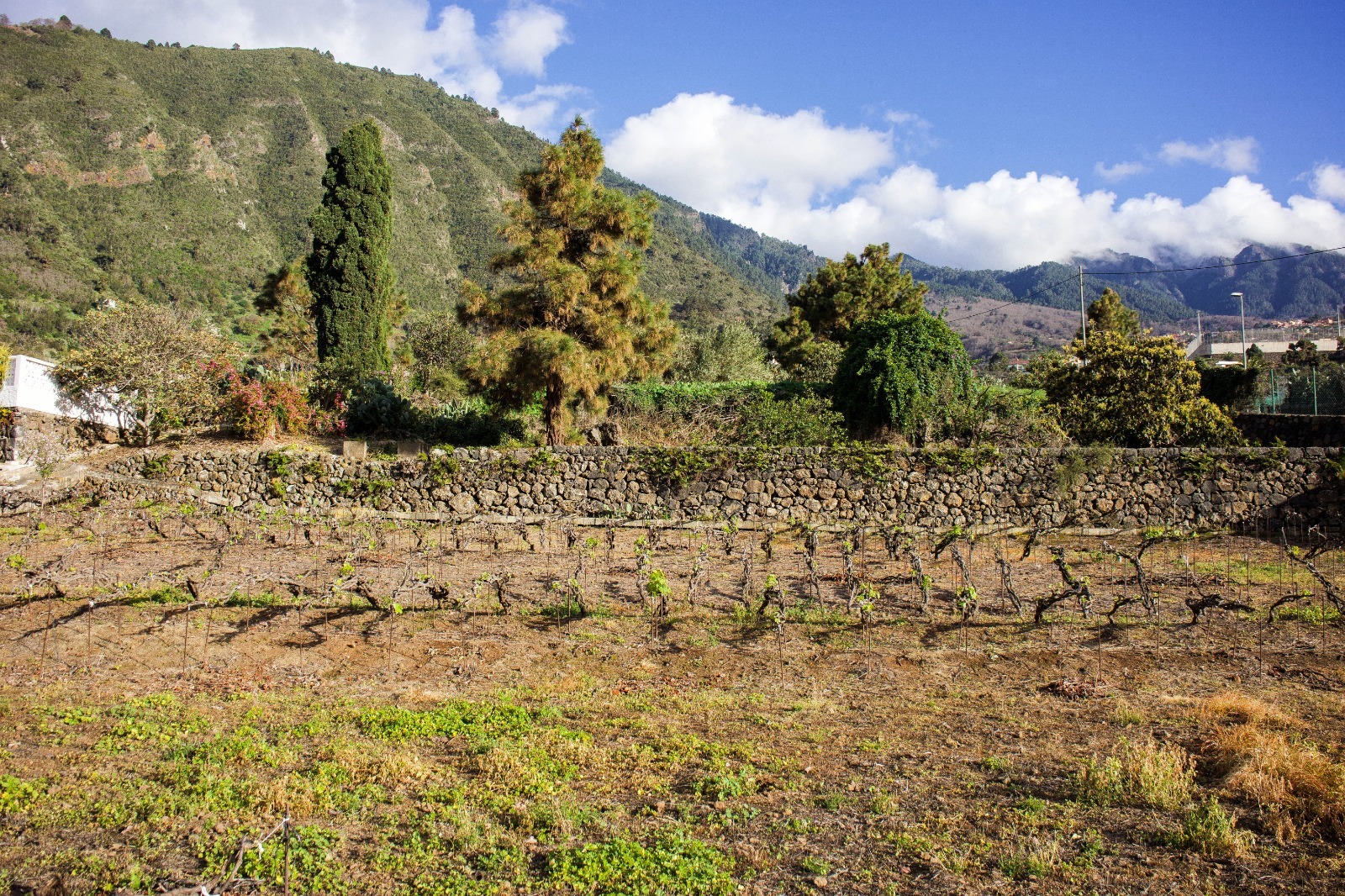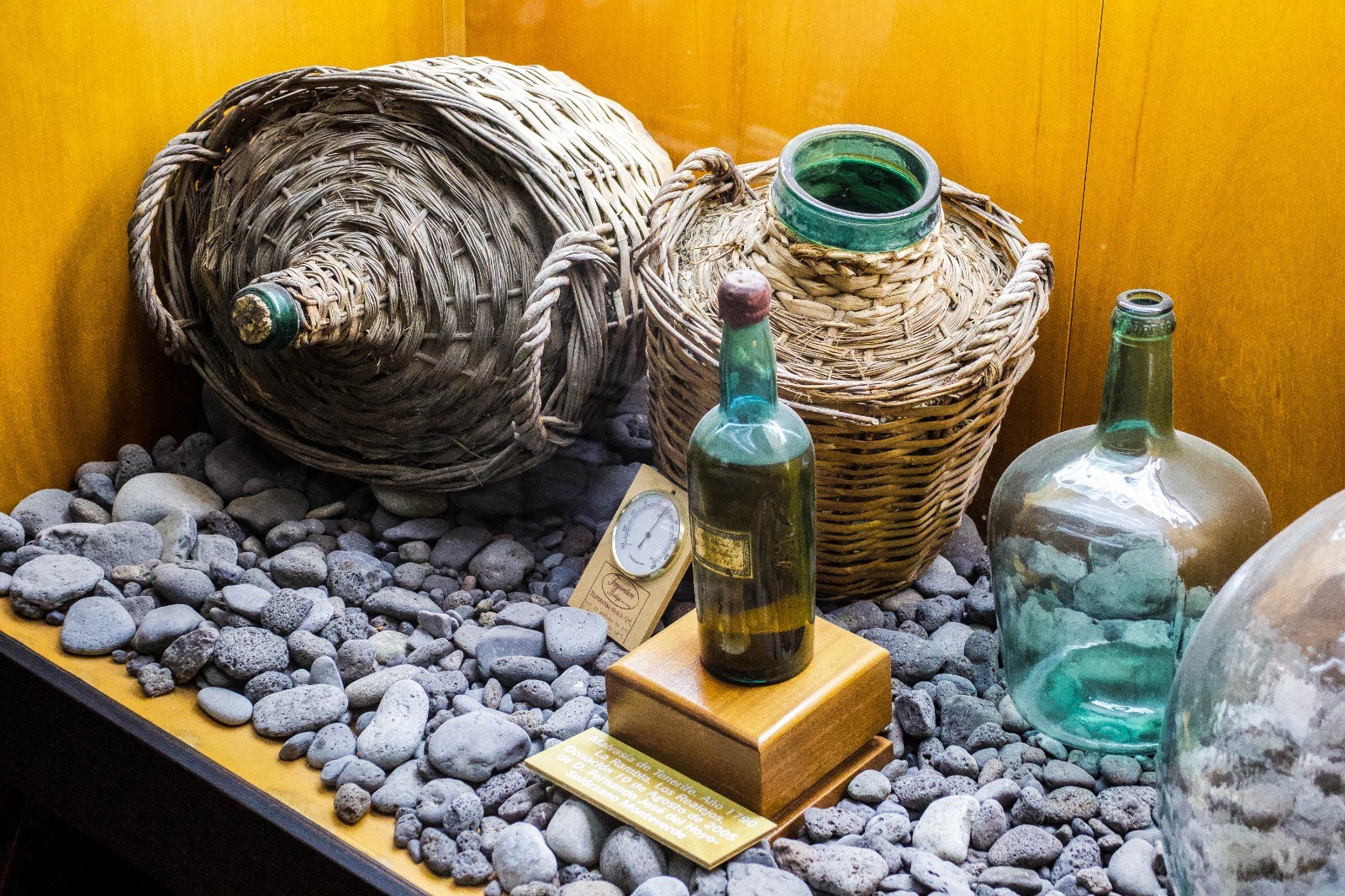Enjoying the food in the Canary Islands is a key part of any trip to Tenerife. The varied and tasty dishes of its traditional cuisine find their best companion in the wines of this land. Exquisite and varied wines stemming from the combination of the singular features of a volcanic island and its history since it was first settled.
The volcanic nature of Tenerife, its complicated terrain with peaks that rise above the Atlantic Ocean, reaching a height of 3,718 metres, and the influence of the trade winds generate an interesting variety of microclimates depending on the setting. Tenerife is a mini-continent that even the most-travelled fall for.
The result of this combination is an attractive landscape characterised by a wide variety of crops adapted to the different soils and altitudes, among which the beautiful views of vines covering the slopes of the high mountains are particularly noteworthy.
Discovering Tenerife through its different, unique and singular wines is an excellent way to sample the history of the largest of the Canary Islands by bringing all five senses into play.
Origin of the vines
The Guanches – the former natives of the island of Tenerife – were not familiar with wine until the arrival of the Castilian conquerors in the 15th Century. The vines were introduced by the Spanish and Portuguese conquerors following the end of hostilities.
The diverse origins of the new settlers led to the introduction of different strains planted in the virgin lands. This led to the production of a wide variety of wines, along with different farming systems (multiple braided cord, low- arbour vines, semi- arbour vines, glass…).
A walk through such municipalities as Matanza de Acentejo, El Sauzal, Güímar, Icod de los Vinos and La Orotava means enjoying a variety of vineyard landscapes.
Casa del Vino in El Sauzal

A very interesting way to discover the history of wine on the island of Tenerife is by visiting the Casa del Vino (“Casa Museo Insular de la Vid y el Vino de Tenerife” – Island Museum of Wines of Tenerife) in El Sauzal. This former 17th Century manor house, known as the “Hacienda de San Simón” [Manor House of Saint Simon], was an historical and rustic manor house built to centralise the agricultural activity of nearby estates.
The Casa del Vino encloses a lovely central courtyard, with an old wooden winepress, where grapes were trodden and pressed to obtain grape juice.
Around the main courtyard there are different rooms of the manor house that formerly operated as cellars, potato storage rooms, guano storage rooms, stables, a kitchen, bedrooms, etc. which nowadays house the museum, wine bar, wine-tasting room, storeroom, restaurant, tavern and multi-purpose room, thus highlighting the importance of wine in Tenerife.
The major development of the wine trade in the Canary Islands arrived when sugar cane crops were abandoned in the 16th Century, when America became a major competitor in terms of quantity and price. Wine exports from Tenerife to the recently discovered America and to old Europe were constant in the 16th and 17th Centuries.
The magnificence of the variety of wines from Tenerife was chosen by the European courts, where they were served due to their quality and prestige, and found in William Shakespeare a great ambassador of the sweet malmsey wine that he refers to in some of his works.
The Canary Islands can proudly claim that they are unfamiliar with attacks from phylloxera (viteus vitifoliae) – a devastating plague that ravaged Europe. Accordingly, a large number of varieties of vine that have disappeared in other parts of the world can still be found in the islands. Unique flavours that are well worth trying.
An interesting municipality to visit wineries in Tenerife is Tegueste – a land where you can sample good wines. In Icod de los Vinos – close to the dragon tree – wine tasting sessions of the local produce are offered in some of its bars and restaurants.
The southern region of Tenerife also has some important wineries where you can sample good wines with wonderful views over the sea at an average temperature of 26 degrees throughout the year.
Ports in Tenerife and their relationship with wine
The ports of Garachico, Puerto de la Cruz (La Orotava Port) and Santa Cruz de Tenerife bore witness to the continuous trade in barrels that left Tenerife filled with the flavoursome Canary Island wines en route to Europe, primarily to London and Antwerp.
When strolling through the village of Garachico, you can find some signs of this close relationship with wine. One of these lies in the monument known as “Motín del Vino” [The Wine Mutiny].
This work represents the fight by the harvesters from Tenerife against the English monopoly on wine production which in 1666 ended up with an attack on the wine cellars in Garachico Port. The most important port in Tenerife was located in this pretty town until the eruption of the Arenas Negras volcano in 1706, which destroyed part of the town and its port, thus ending the prosperity of the enclave.
At that time, wine was paid for in luxury goods and produce, which led to a rich cultural heritage on the island of Tenerife. A good example of this can be found in the village of Taganana, in the Anaga massif. This pretty rural park is worth a visit to follow one of the hiking trails. Any excursion to Taganana must include a visit to Our Lady of las Nieves Church, where you can find the triptych of La Adoración de los Reyes [The Adoration of the Monarchs], a Flemish work produced at the Antwerp School in 1575.
Other starting points on the wine route take us to Anaga, to such places as Afur, Tachero, Roque Bermejo and El Roque de las Bodegas – enclaves located close to the old wineries. Vines grew in the hills, on slopes where terraces were created for their cultivation. Such small villages and hamlets as Taganana sprang up in the area.

Tenerife is an island of contrasts, which mixes recently introduced and older soils. This variety of soils, some poor and stony, other clay soils… create grapes with a high alcoholic strength and early harvests. The richer soils produce wines later and with a lower alcoholic strength.
Try listán blanco, gual, malvasía blanca, torrontés, forastera, vijariego, marmajuelo, moscatel, verdello, pedro ximénez, … during a trip to the island, and remember that there are five denominations of origin in Tenerife – Valle de La Orotava, Ycoden-Daute-Isora, Tacoronte-Acentejo, Valle de Güímar and Abona. An important recognition of a high quality gastronomic product that forms part of its history.
If you visit Tenerife in the month of November, remember that the wine festival is held with the opening of the wine cellars. If your trip falls at the end of the month, visit Icod de los Vinos to enjoy one of the most remarkable festivals, known as “las tablas de Icod” [The Icod Go-cart Rally].


